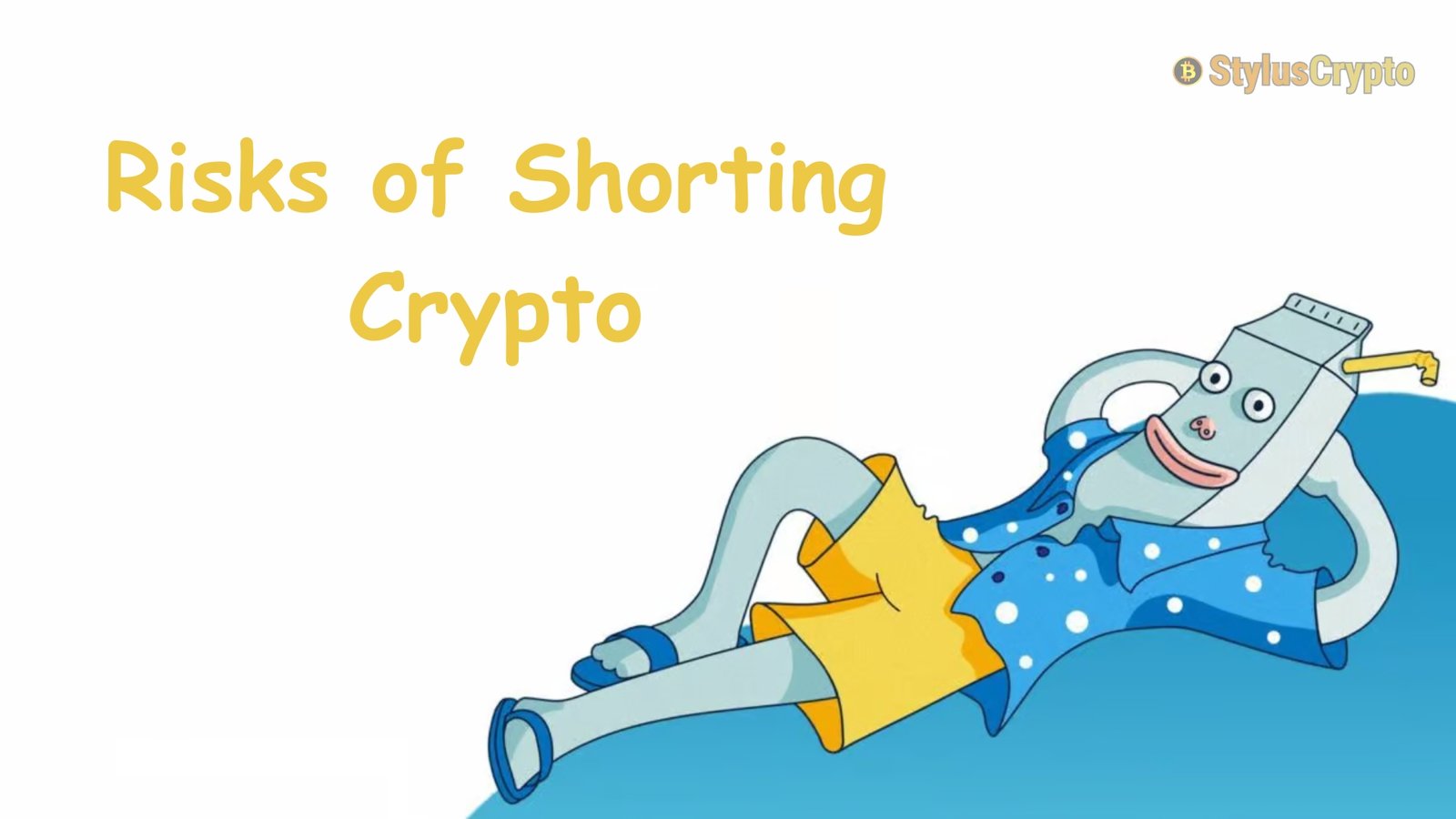Shorting Crypto In finance, short selling (or “shorting”) is a practice where investors bet against an asset, hoping its price will decline. This strategy has become increasingly popular in cryptocurrency markets, where volatility can lead to rapid price changes and significant profits for savvy traders. While the potential rewards of shorting crypto are substantial, the risks are equally high, and the intricacies of the process require a thorough understanding. In this article, we explore the concept of shorting cryptocurrency, how it works, its advantages, risks, and the strategies traders use.
What is Shorting Crypto?
Shorting refers to borrowing an asset—such as a cryptocurrency—from another party and selling it immediately on the open market. The goal is to repurchase the asset at a lower price in the future, return it to the lender, and pocket the difference as profit. If the asset’s price drops as predicted, the trader gains. However, if the price rises, the trader faces losses, which could theoretically be infinite since there’s no cap on how high a price can go.
Shorting has gained popularity in the context of cryptocurrencies due to the market’s notorious volatility. Prices of digital currencies like Bitcoin (BTC), Ethereum (ETH), and other altcoins can swing dramatically within a short period, providing numerous opportunities for short sellers to profit.
How Does Shorting Crypto Work?
The process of shorting cryptocurrency typically follows these steps:
- Borrowing Crypto: A trader borrows cryptocurrency from a broker or lending platform. For example, if a trader wants to short Bitcoin, they might borrow one Bitcoin from a lending platform or exchange.
- Selling the Crypto: After borrowing the asset, the trader immediately sells it at the current market price. Let’s say Bitcoin is priced at $30,000 when borrowing. The trader sells the borrowed Bitcoin, expecting its price to fall.
- Buying Back the Crypto: The trader waits for the cryptocurrency’s price to drop. If Bitcoin falls to $25,000, the trader buys back the Bitcoin at a lower cost.
- Returning the Borrowed Asset: After repurchasing the asset, the trader returns the borrowed Bitcoin to the lender, profiting from the $5,000 difference between the selling and buying prices minus any fees.
Platforms for Shorting Crypto
Several platforms allow traders to short cryptocurrencies. Some of the most popular include:
- Binance: Offers futures contracts and margin trading with leverage, allowing users to short crypto.
- BitMEX: Known for its high-leverage futures trading, BitMEX allows traders to take short positions on various cryptocurrencies.
- Bybit: A rising player in the futures market, Bybit offers crypto shorting with leverage.
- Kraken: Kraken allows traders to short crypto through its futures platform and margin trading.
- Aave and Compound: Decentralized lending protocols like Aave and Compound allow users to borrow crypto, which can then be sold to initiate a short.
In addition to centralized exchanges, decentralized platforms are becoming increasingly popular for short due to their transparency and lack of intermediaries.
Leverage in Crypto Shorting
Leverage plays a significant role in crypto shorting. It allows traders to borrow more than their initial capital, amplifying potential gains and risks. For example, using 10x leverage means a trader can borrow ten times their initial capital to short a cryptocurrency. This increases the possible profit if the price drops but also magnifies the loss if the price moves against the trader’s position.
Shorting Strategies in Crypto
Traders use various strategies to maximize their chances of profiting from shorting crypto. Some of the most common include:
- Technical Analysis: Traders often rely on technical indicators such as moving averages, Bollinger Bands, and the Relative Strength Index (RSI) to predict price movements. By identifying trends and price patterns, traders can decide when to open and close short positions.
- Fundamental Analysis: This strategy involves evaluating the underlying fundamentals of a cryptocurrency, such as its adoption, development team, and market demand. If a project shows weakness, traders may short the coin in anticipation of a price decline.
- News-Based Trading: Cryptocurrency markets are susceptible to news events, such as regulatory announcements, security breaches, or network upgrades. Traders can short crypto based on negative news that will drive prices down.
- Risk Management: Successful shorting requires strong risk management strategies. This includes setting stop-loss orders to limit potential losses if the market moves against a trader’s position. Without proper risk management, the highly leveraged nature of crypto trading can lead to significant losses.
Risks of Shorting Crypto
While shorting crypto can be profitable, it carries substantial risks. Some of the key risks include:
- Unlimited Losses: In a traditional long trade (buying an asset), the maximum loss is the money invested since the price can only fall to zero. In contrast, when shorting an asset, the cost can theoretically rise indefinitely, meaning the potential losses are limitless. Traders can find themselves in positions where they must buy back the asset at much higher prices to close the position.
- Market Volatility: Cryptocurrencies are among the most volatile assets in financial markets. A price spike could quickly liquidate a short position, mainly when using leverage. This volatility makes it essential to monitor trades and use stop-loss mechanisms closely.
- Liquidation Risks: Most crypto exchanges use margin to facilitate short trades. If the market moves against the trader’s position and the collateral becomes insufficient to cover the loan, the exchange may force the liquidation of the position, leading to losses.
- Short Squeezes: A short squeeze occurs when many traders are shorting an asset, and the price rises. As the price increases, short sellers are forced to buy back the asset to limit losses, increasing the cost. Short squeezes can lead to rapid price increases, causing significant losses for short sellers.
Regulatory Considerations
Cryptocurrency regulation remains a grey area in many countries. Traders should know the legal landscape before shorting crypto, as rules vary significantly. For instance, in some regions, derivatives and margin trading are banned or heavily regulated. Understanding the regulatory environment is crucial to avoid potential legal consequences.
Moreover, certain jurisdictions may impose tax obligations on short selling, where capital gains taxes might apply to the profits earned from shorting. It is advisable to consult with legal and tax professionals before engaging in shorting activities, especially when dealing with international exchanges.
When to Short Crypto?
Timing is everything when shorting crypto. Traders typically look for situations where they believe a cryptocurrency is overvalued or negative news may cause a price drop. Typical scenarios where shorting may be beneficial include:
- Bear Markets: Shorting can be profitable when the overall market is in a downtrend.
- Overbought Conditions: Technical indicators, such as the RSI, can indicate when a cryptocurrency is overbought, signaling a potential price decline.
- Regulatory Crackdowns: News of government regulation or bans can lead to sharp price declines, making it a prime time to short.
Conclusion
Shorting cryptocurrency can be a lucrative but risky strategy. Traders must be well-versed in market trends, technical and fundamental analysis, and risk management techniques. While shorting offers the potential for significant profits in a falling market, it also exposes traders to unlimited losses if the market moves in the wrong direction.
For those willing to take on the risks, shorting crypto can be a powerful tool in navigating the ever-changing world of digital assets. However, it is essential to proceed cautiously, ensure proper risk management, and always stay informed of market conditions and regulations.

